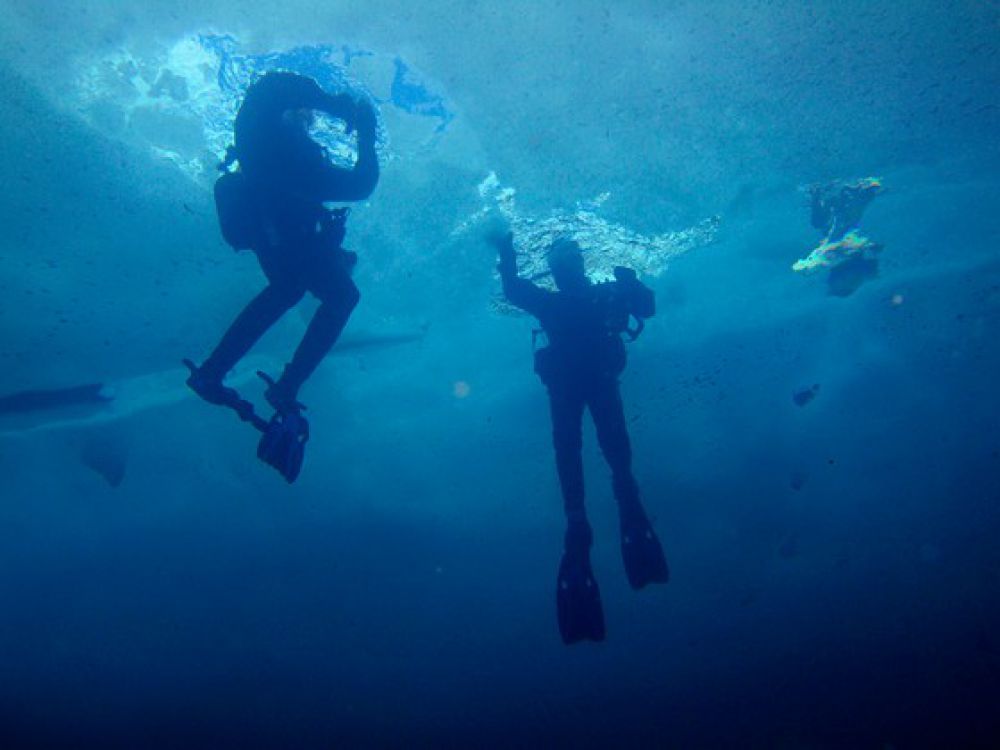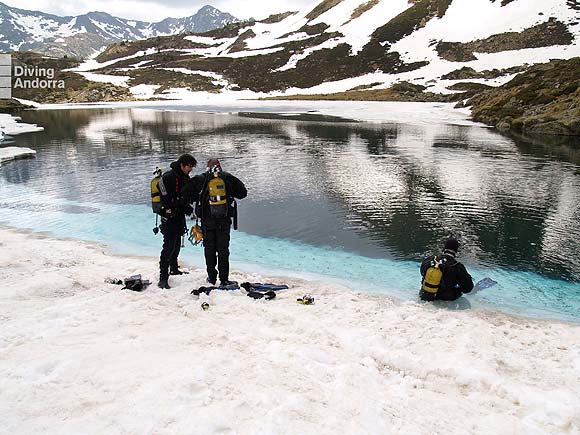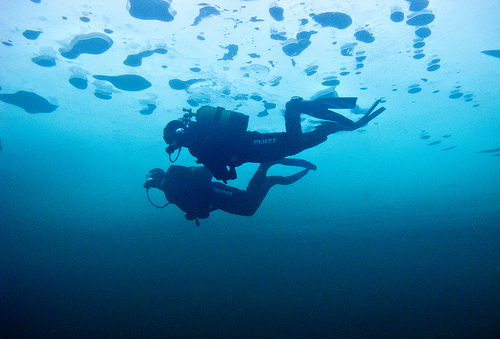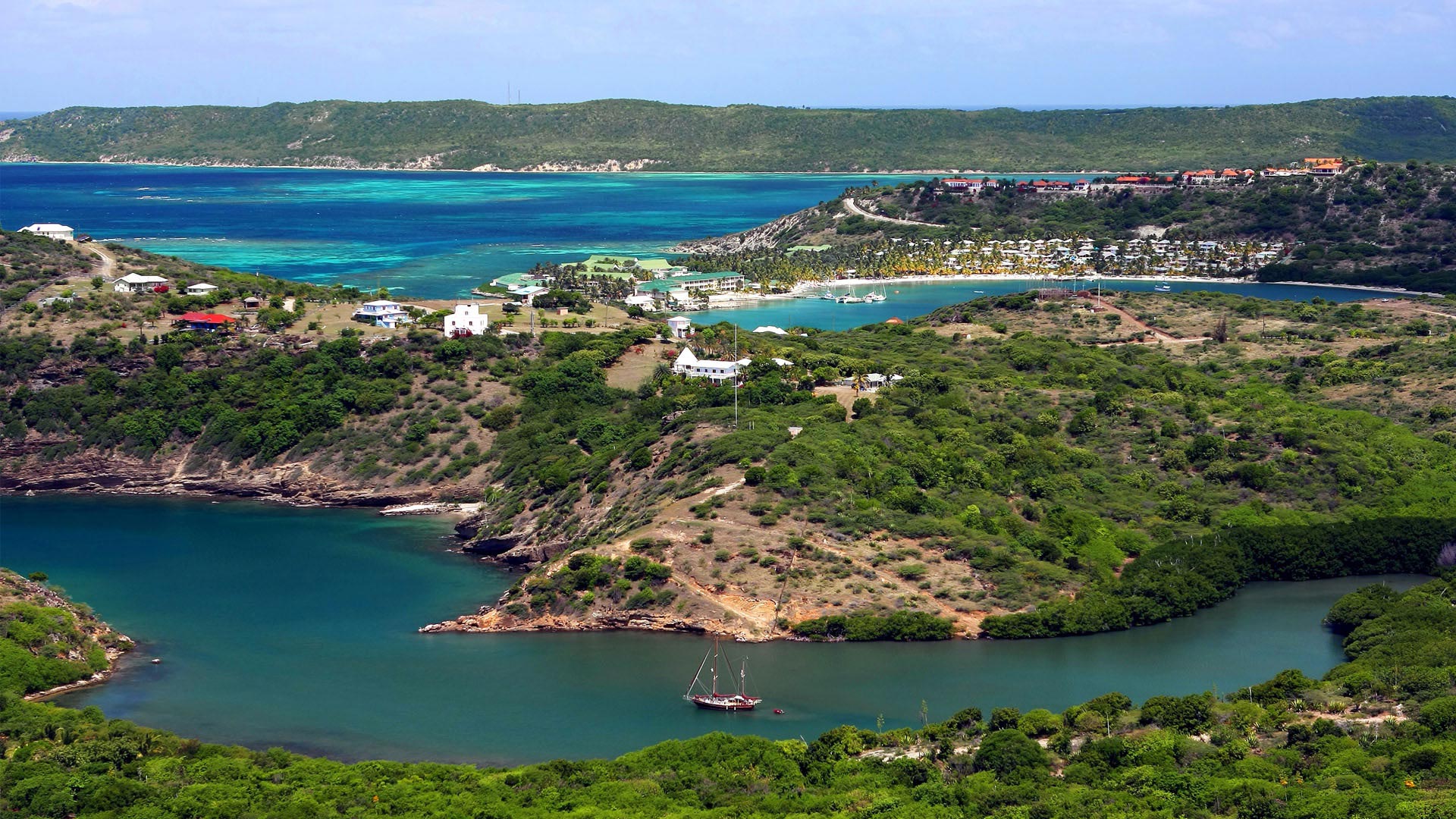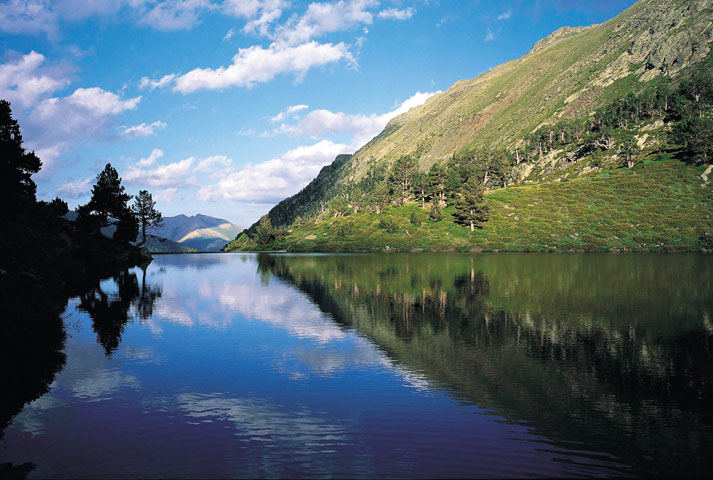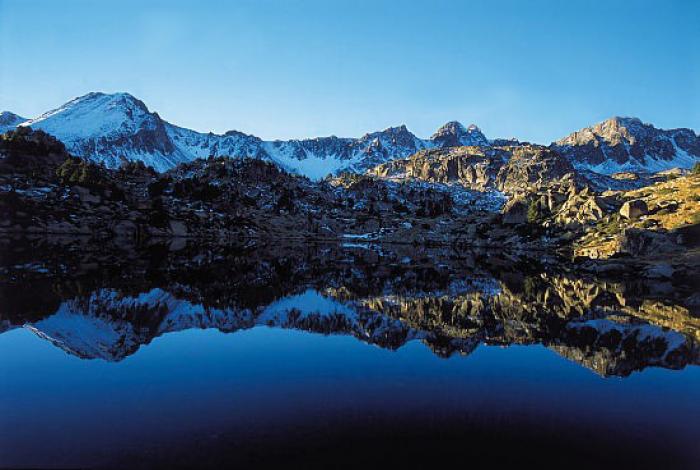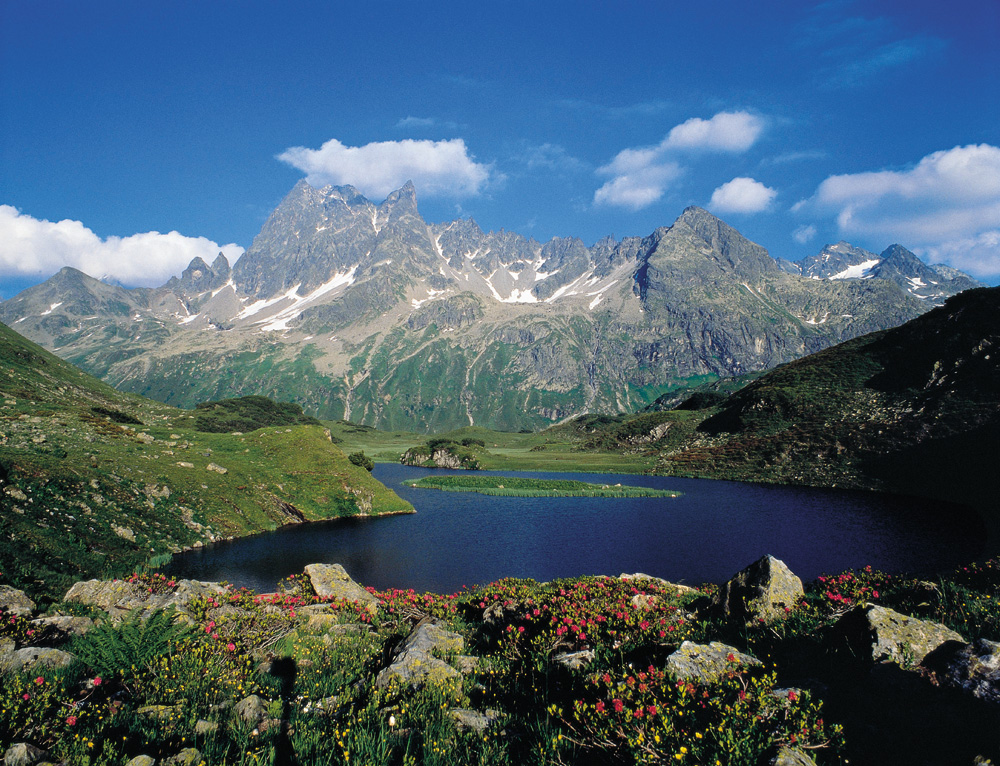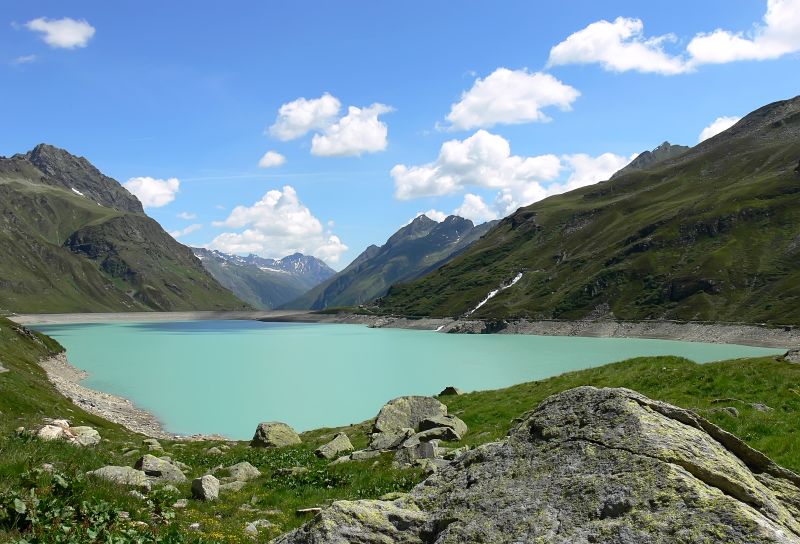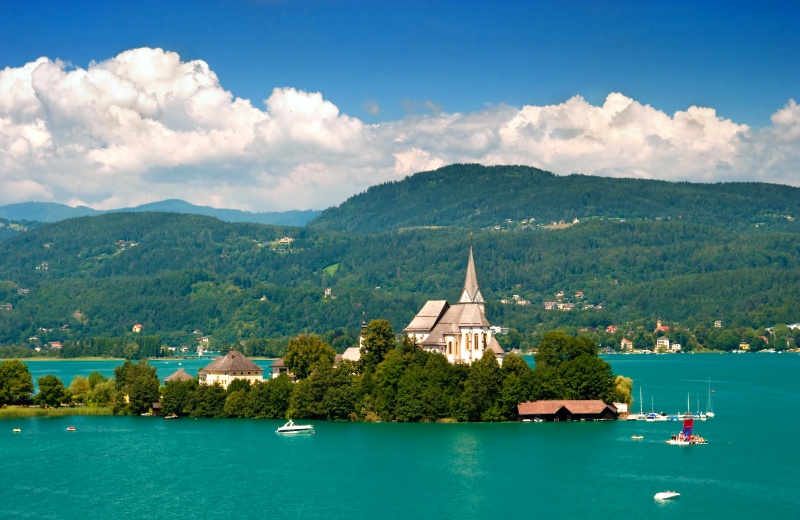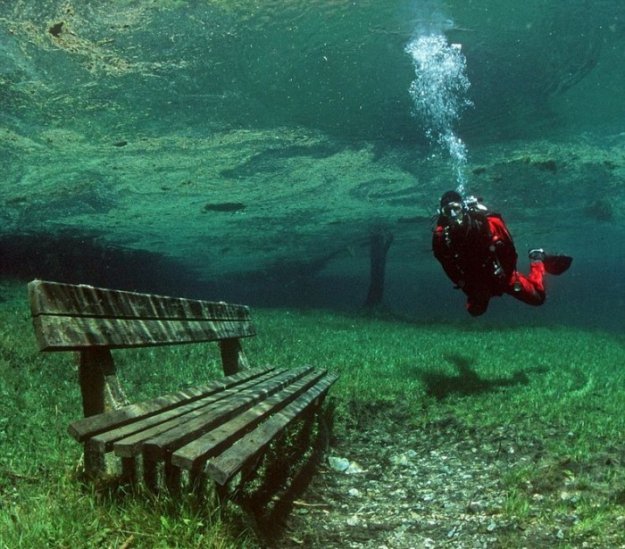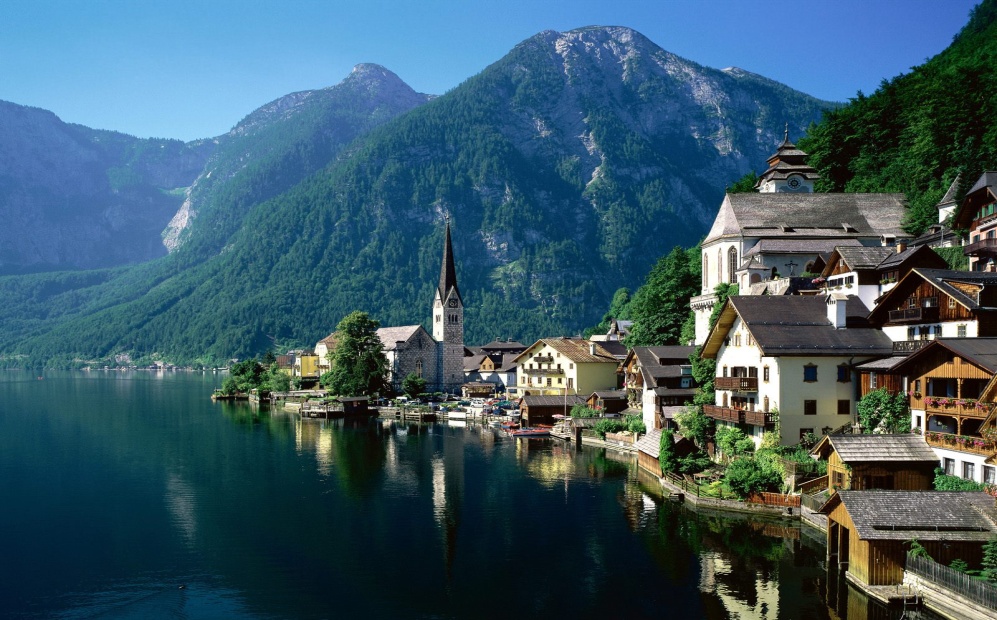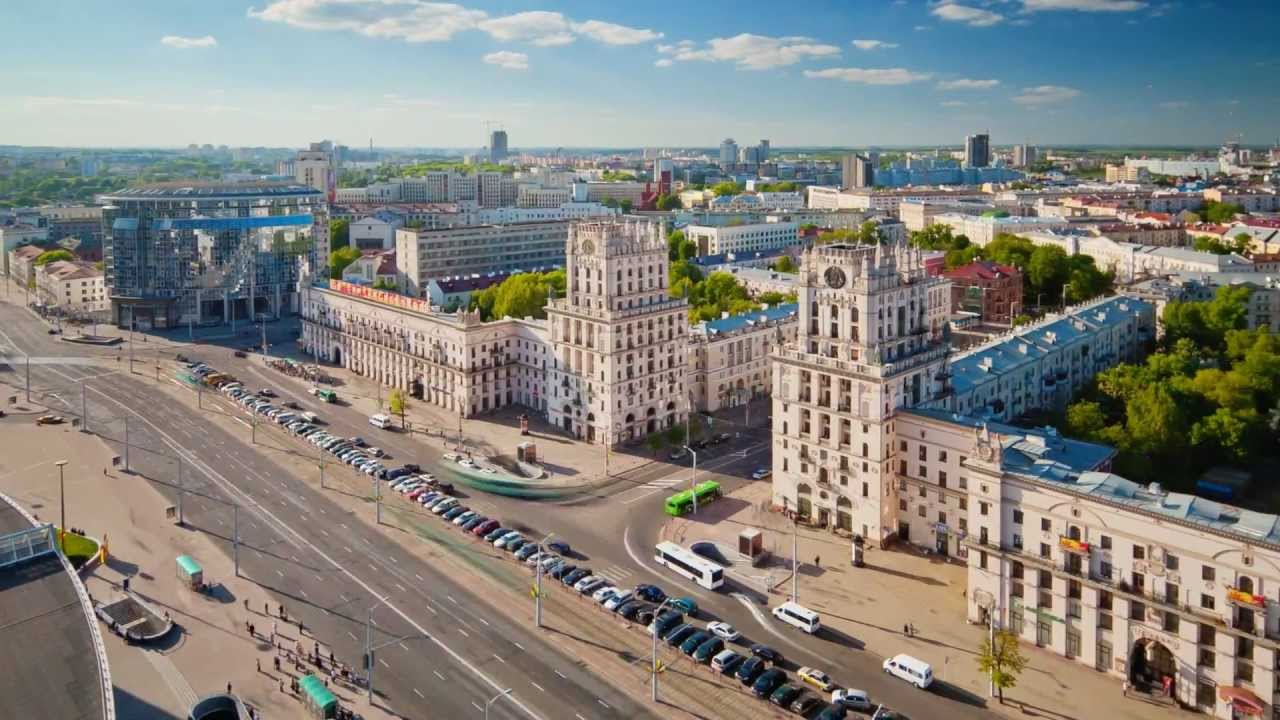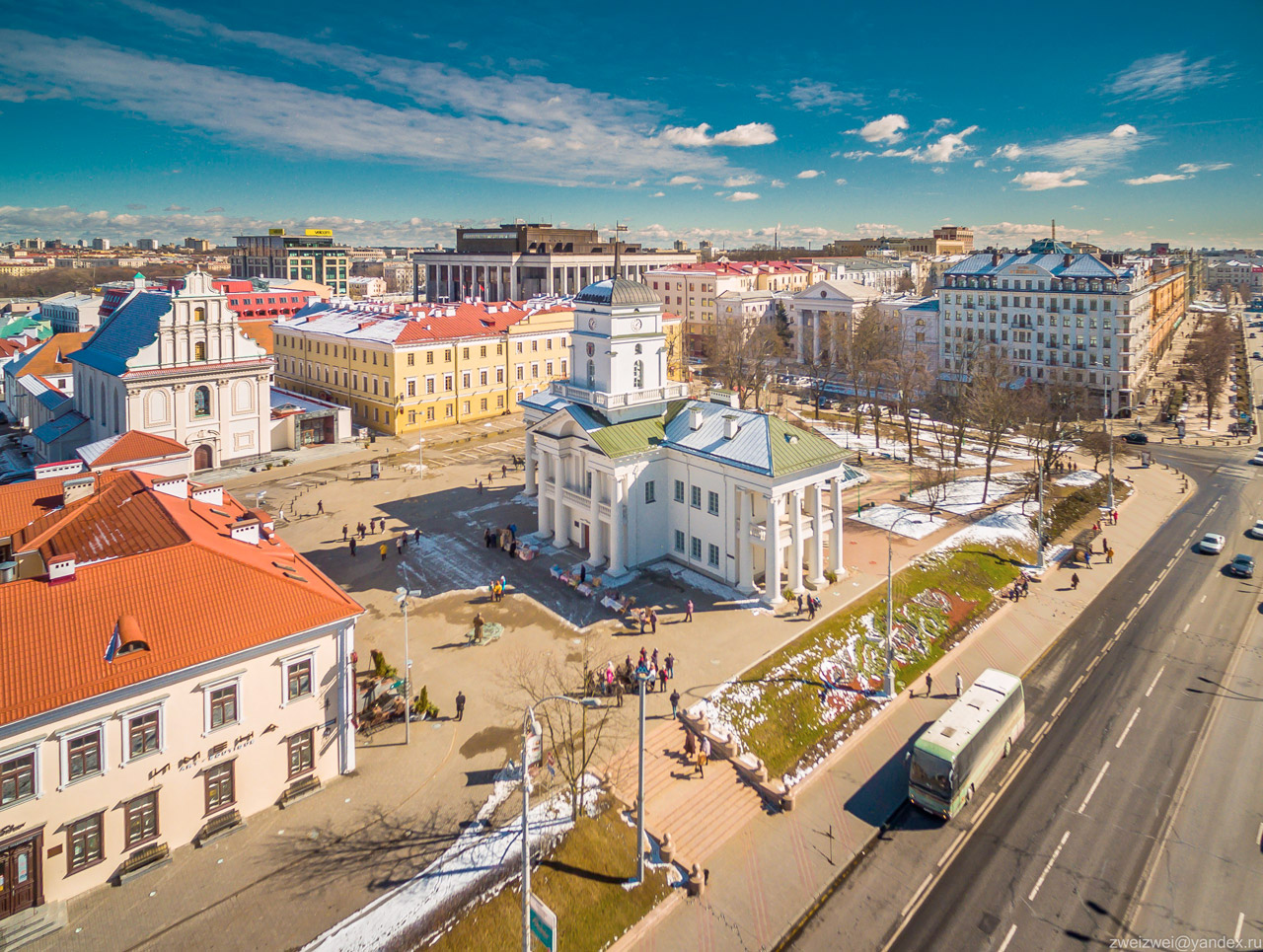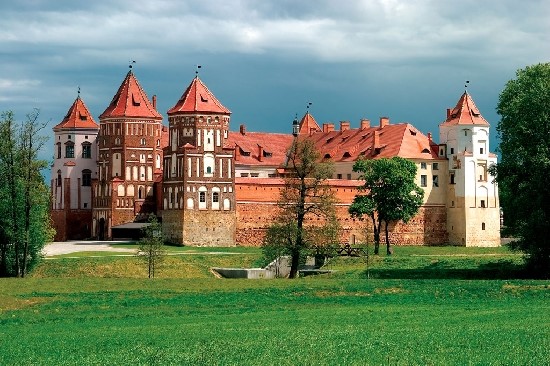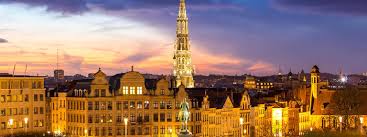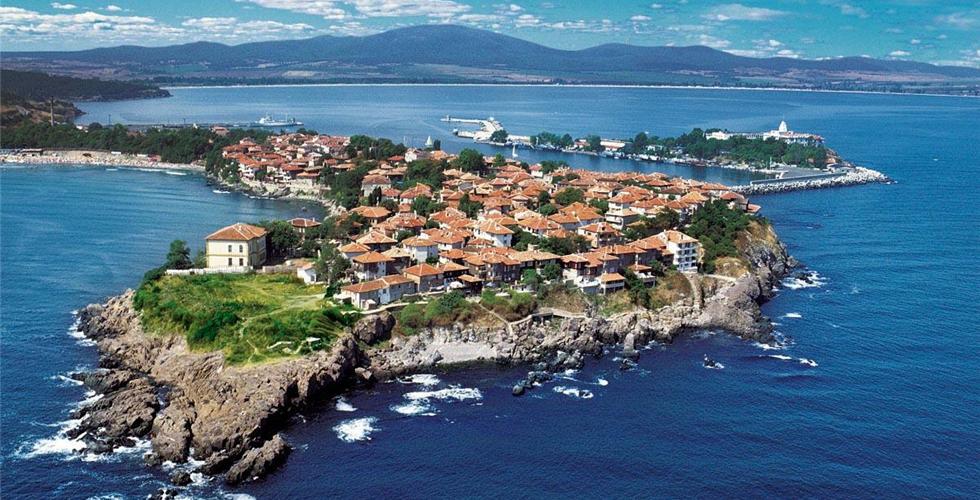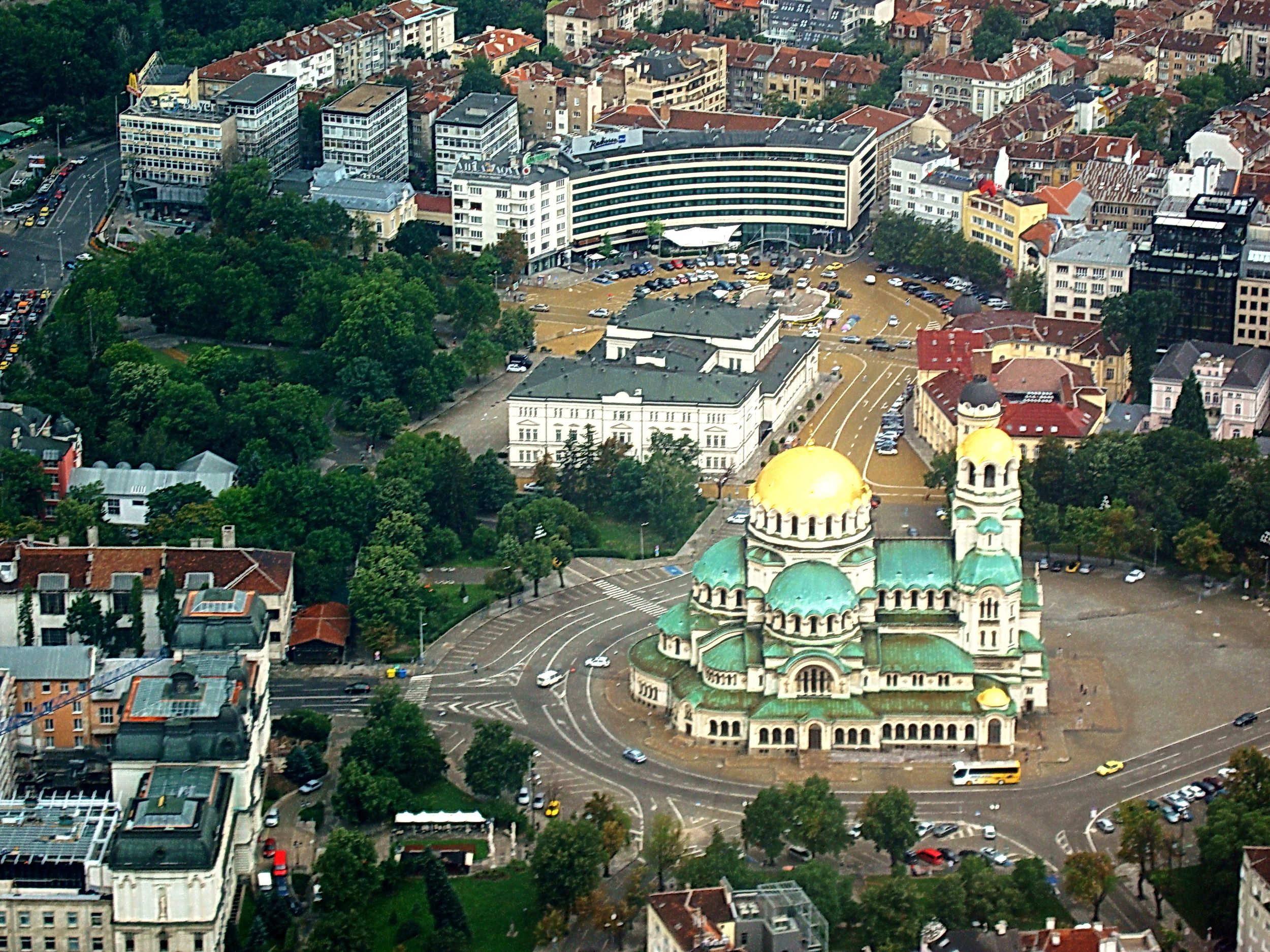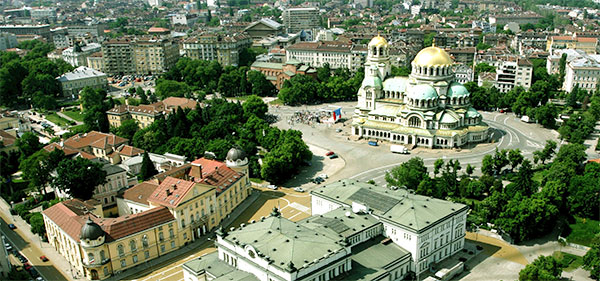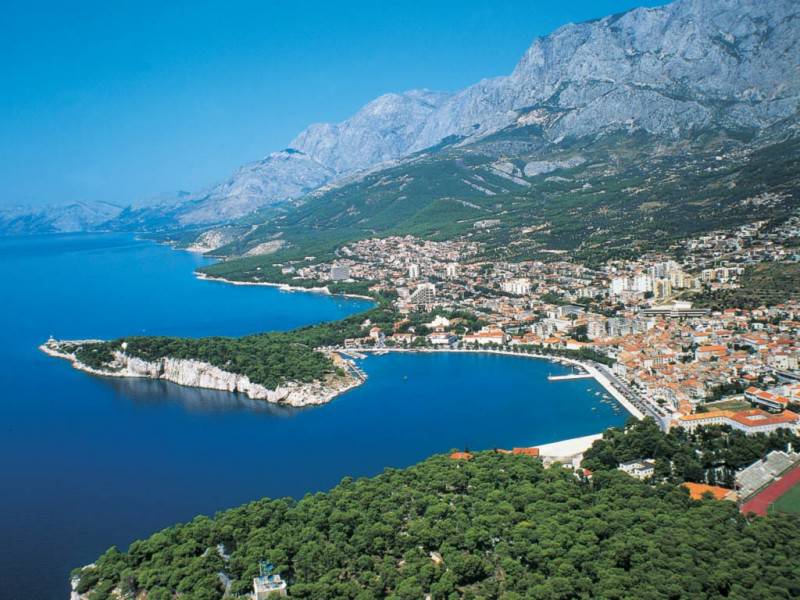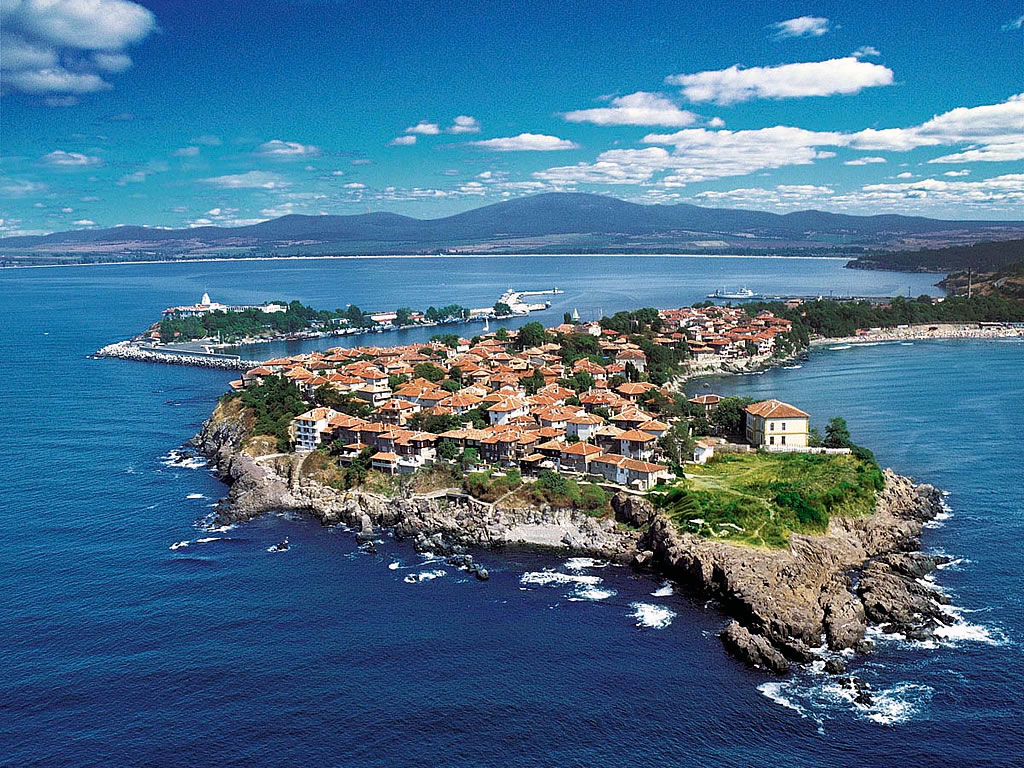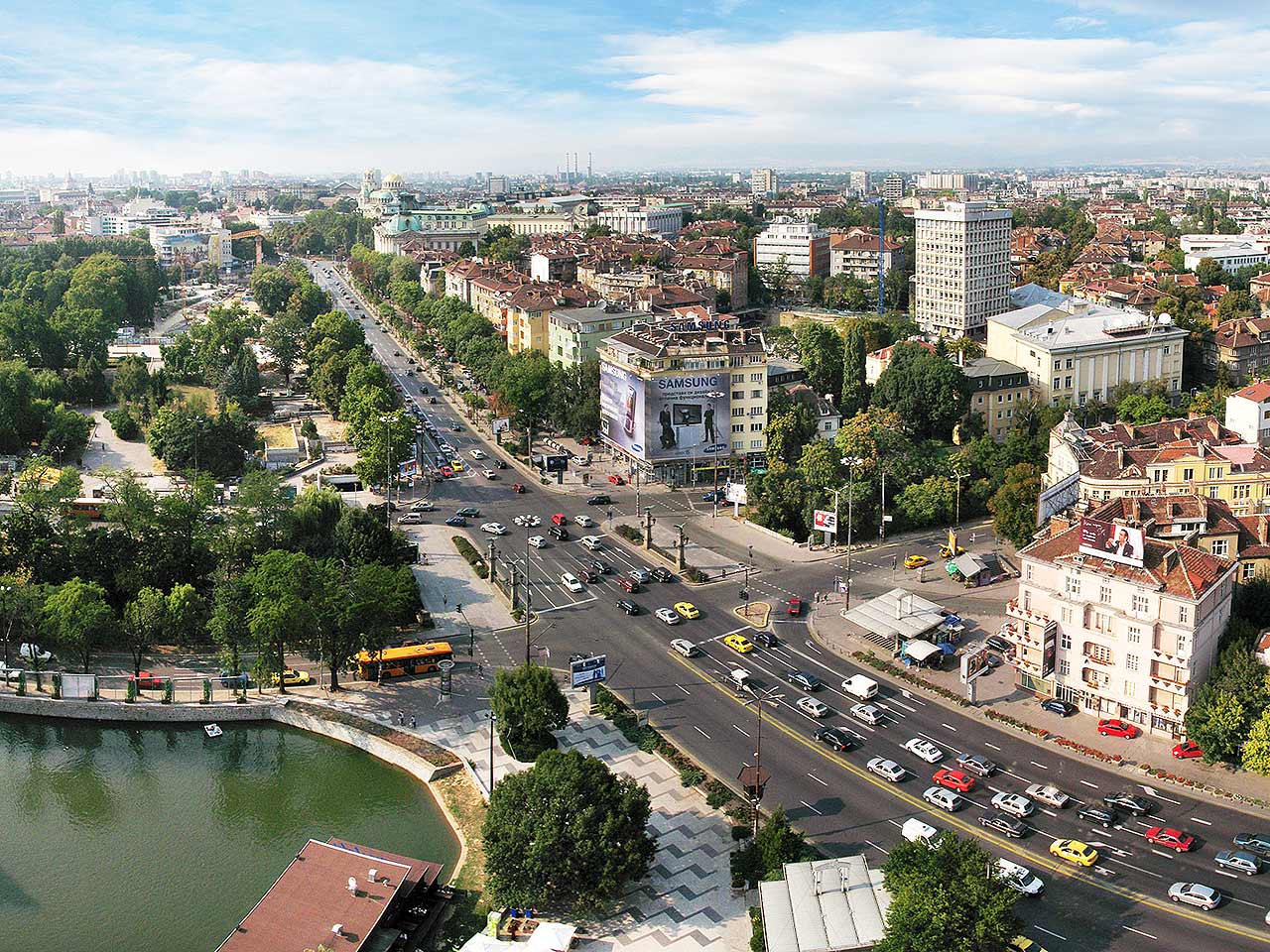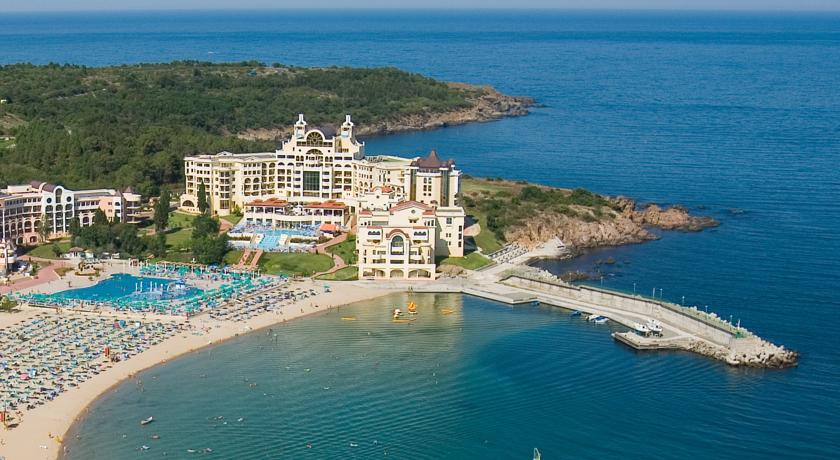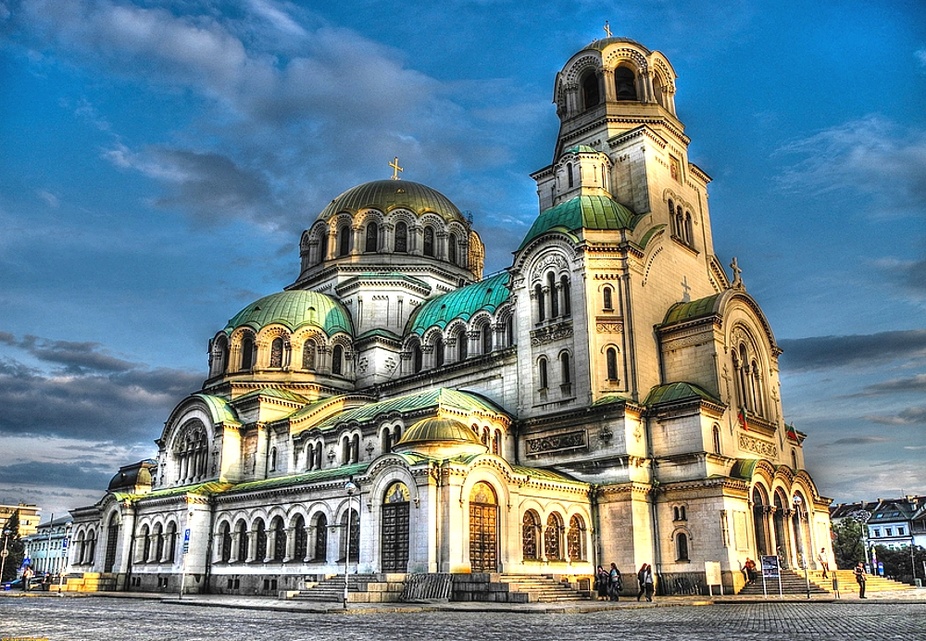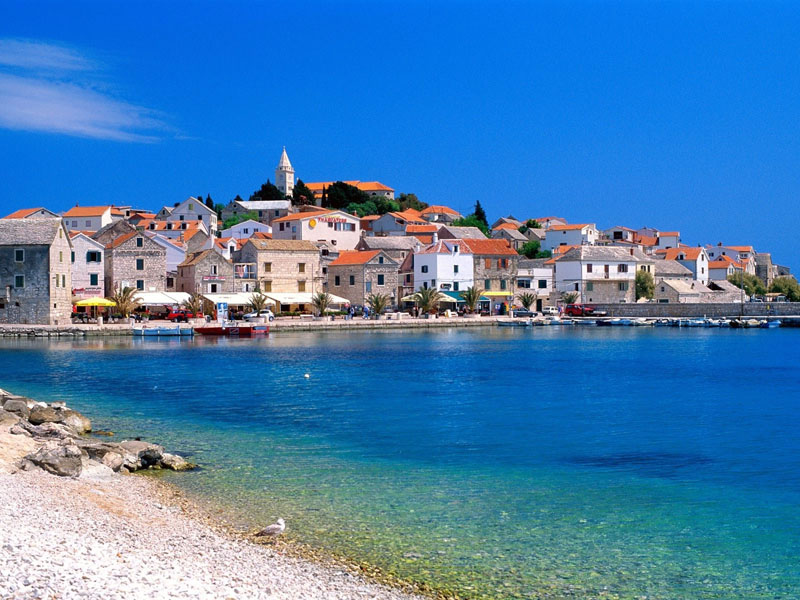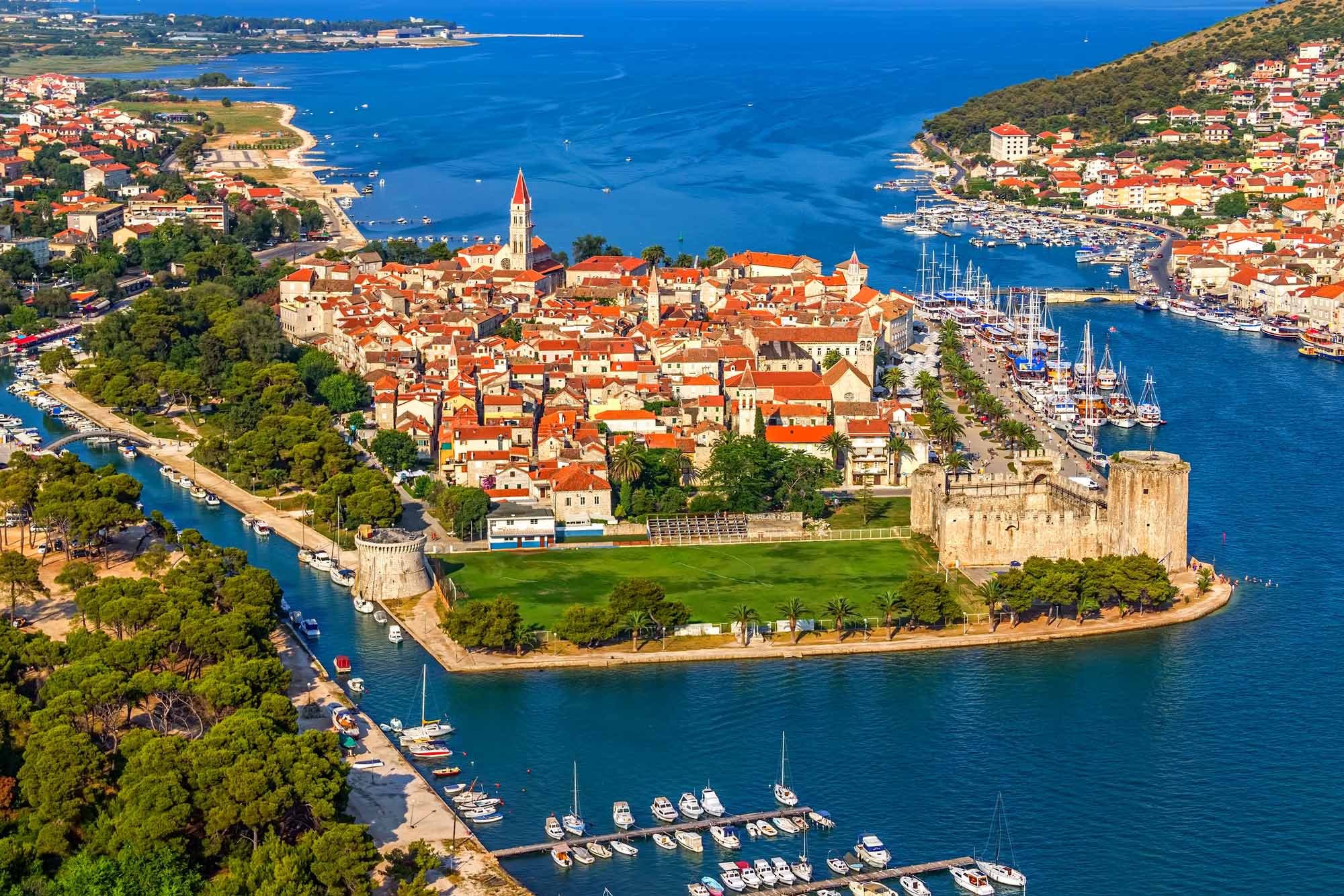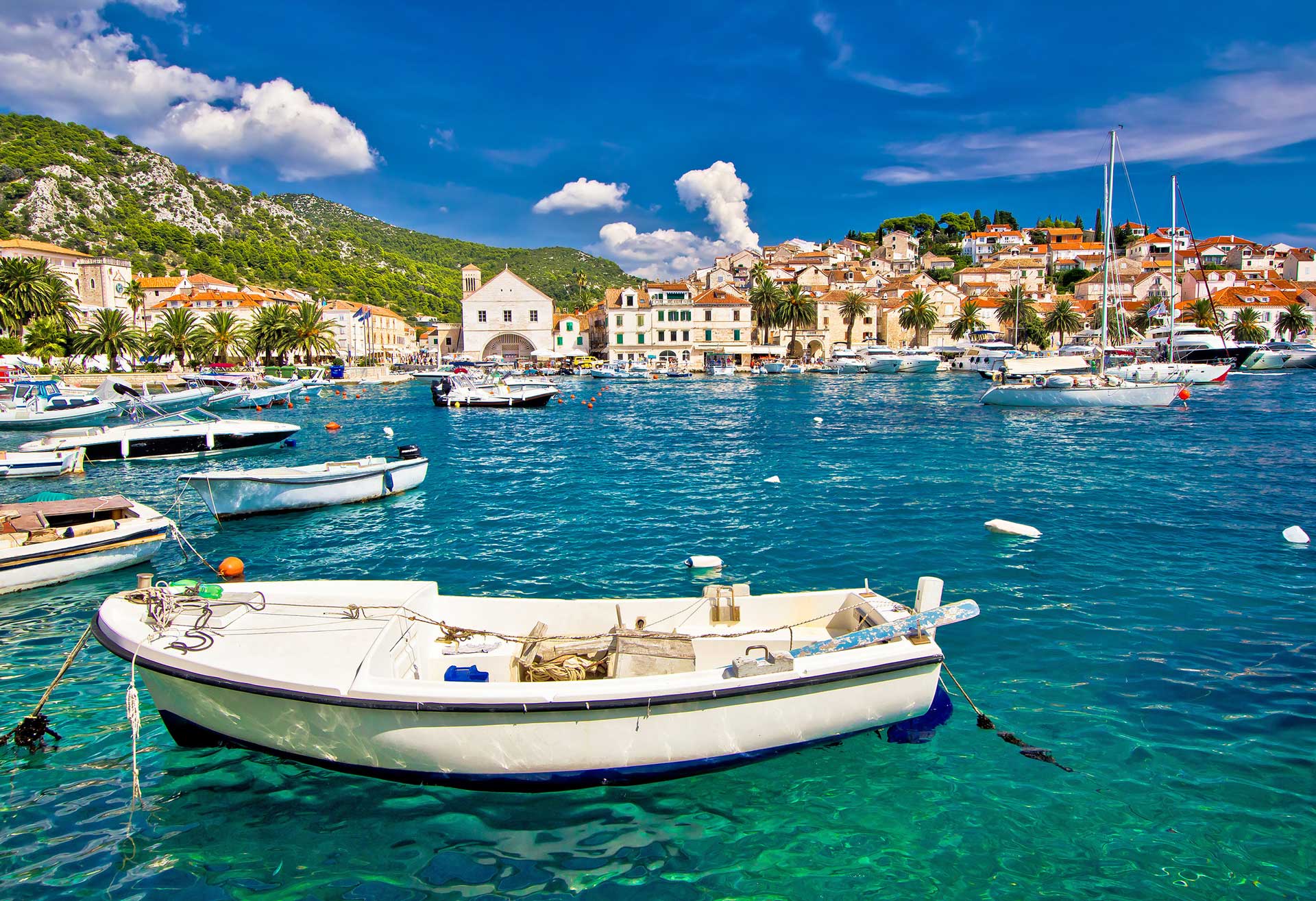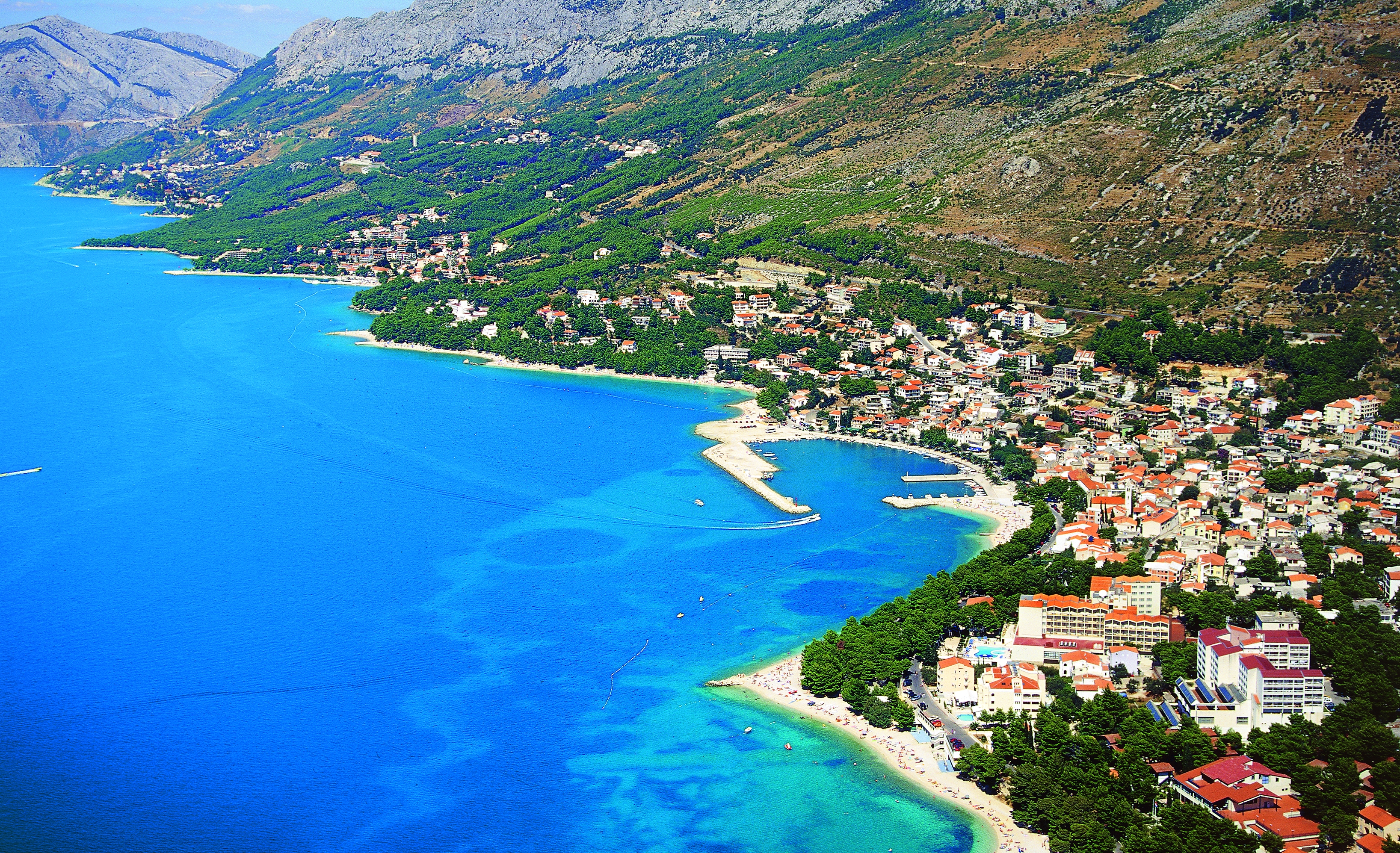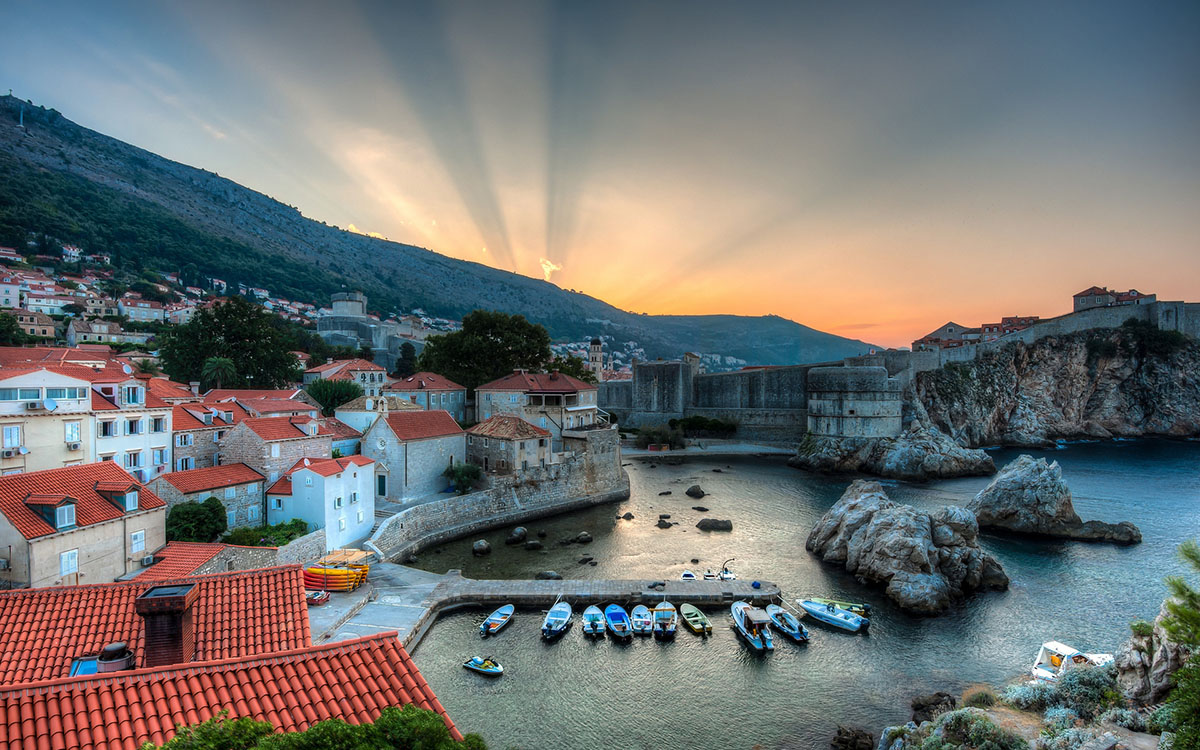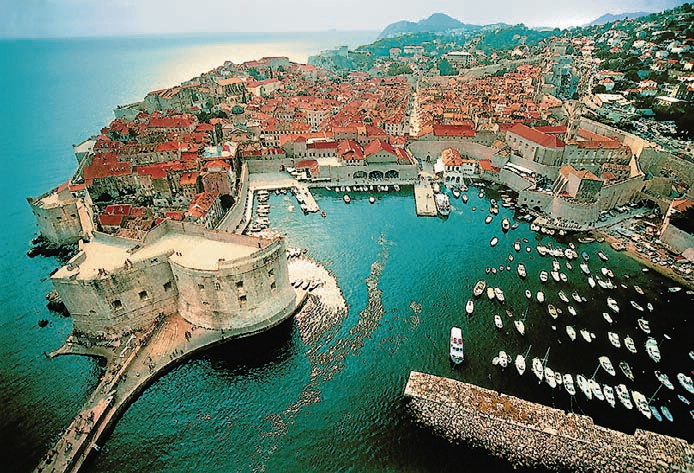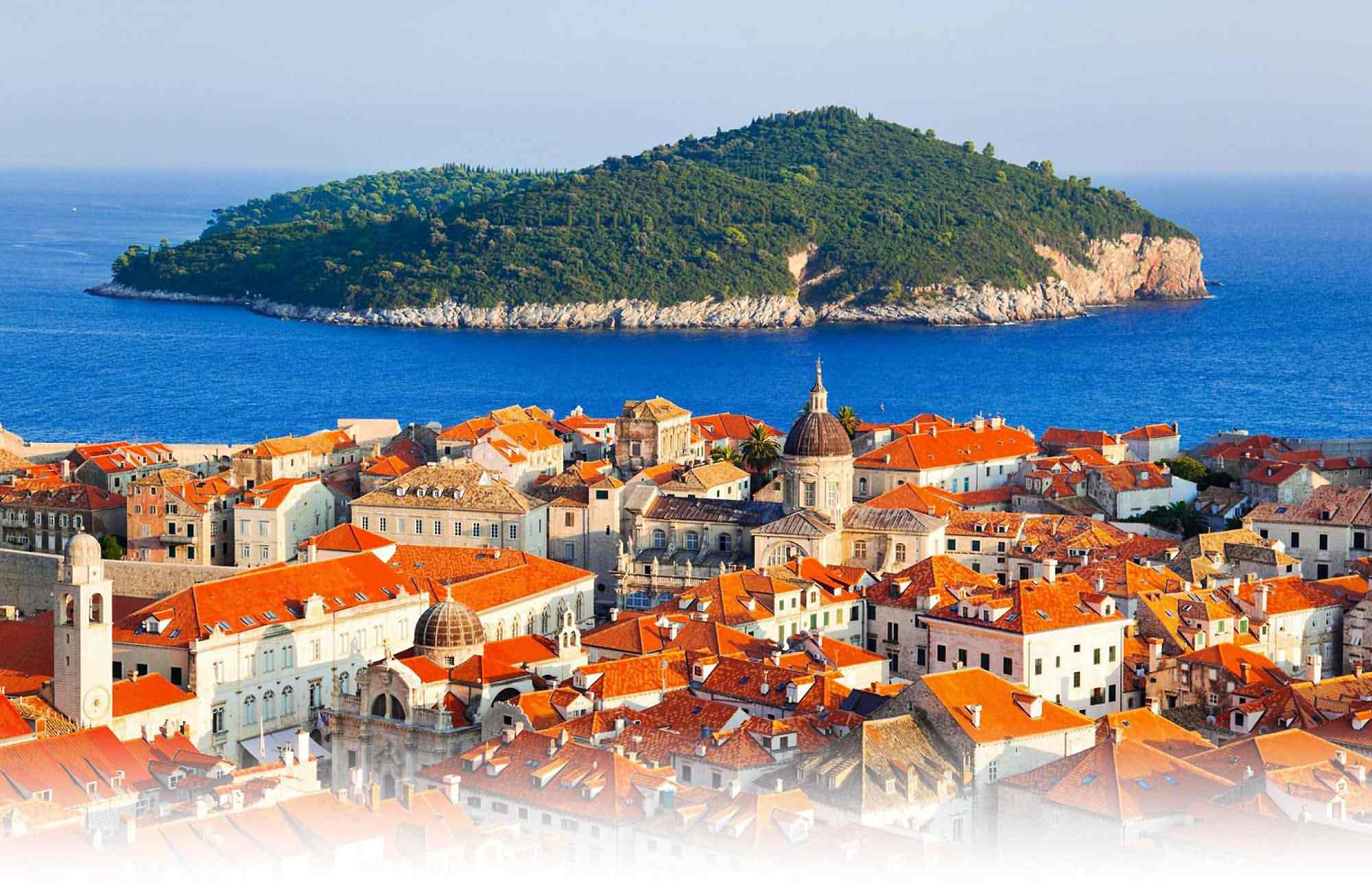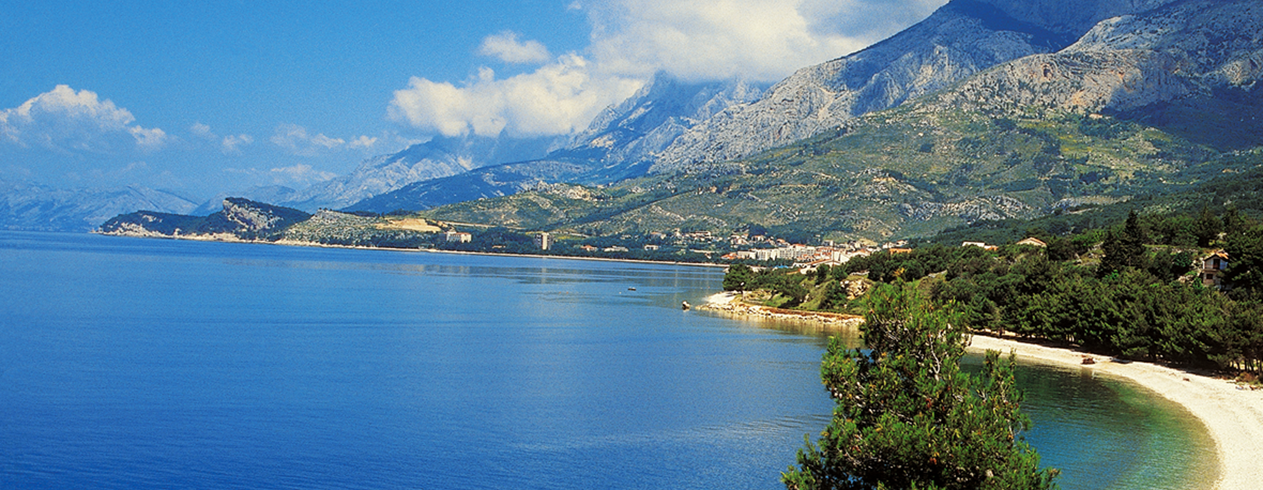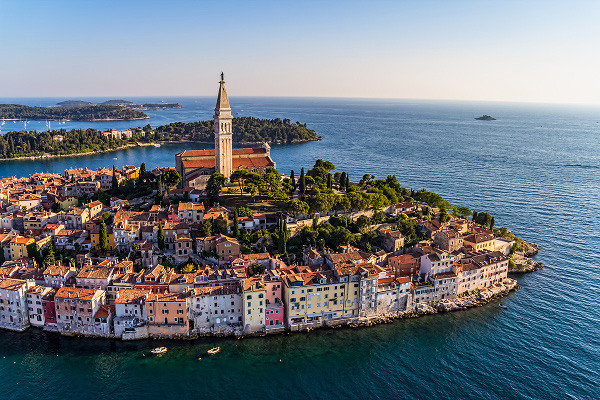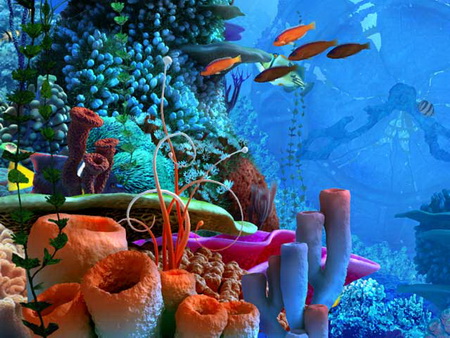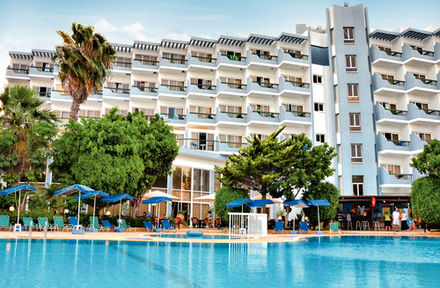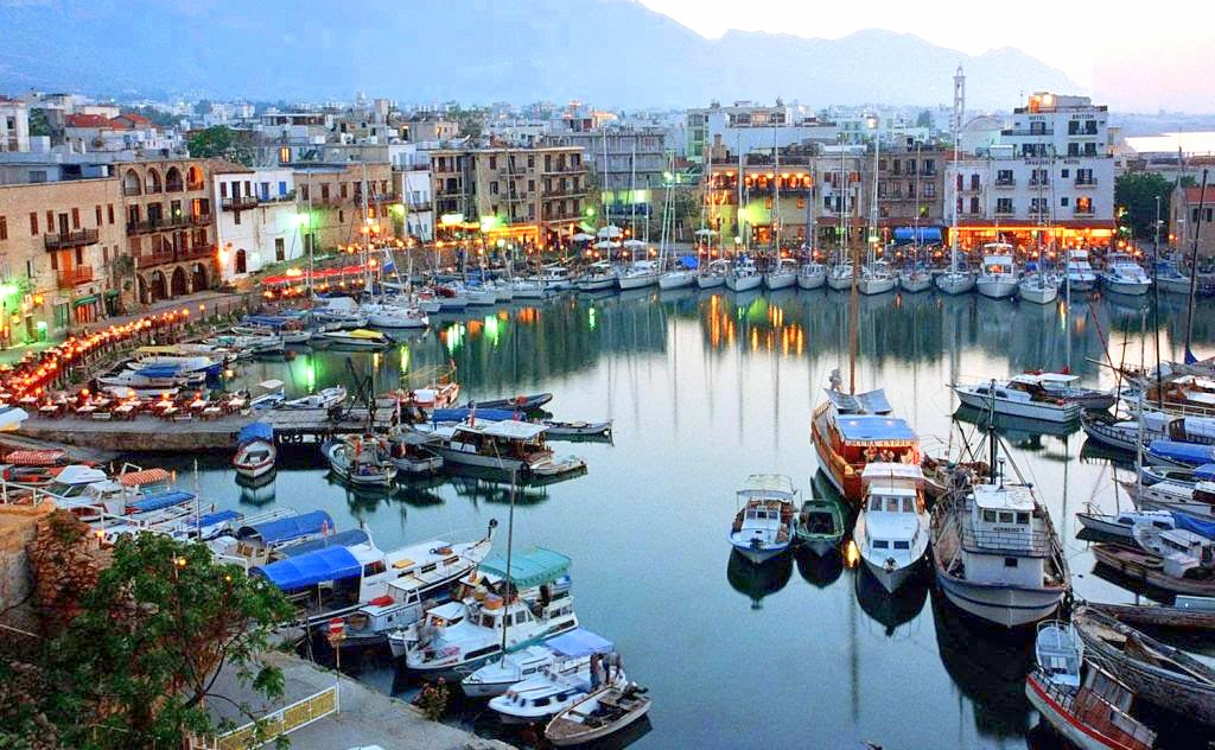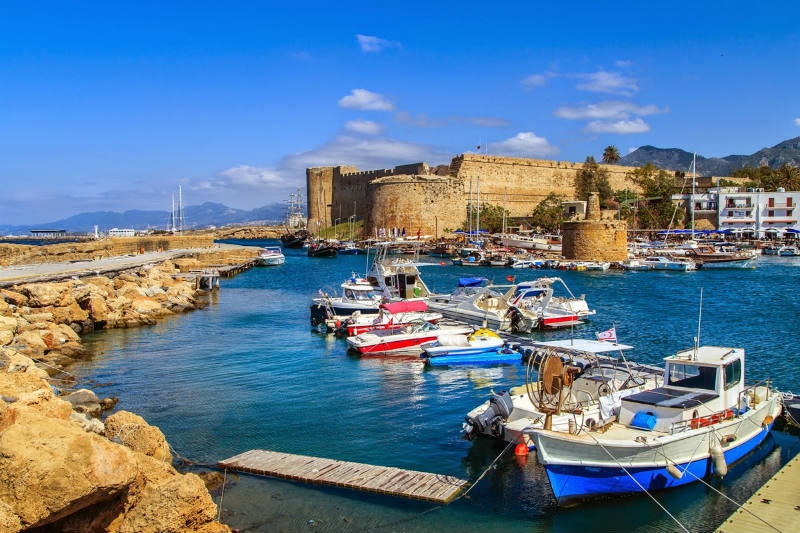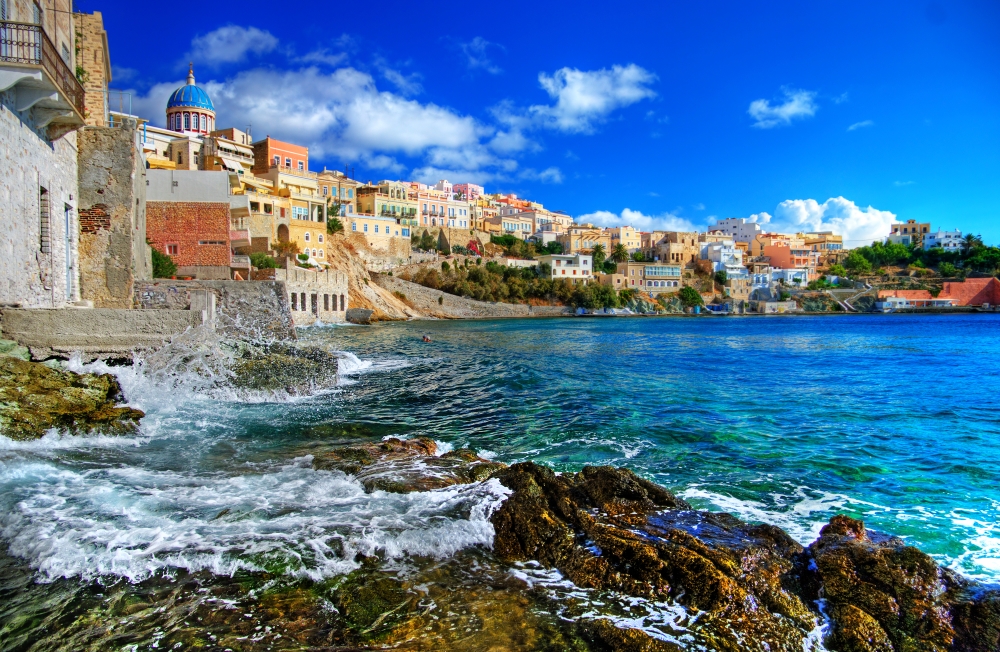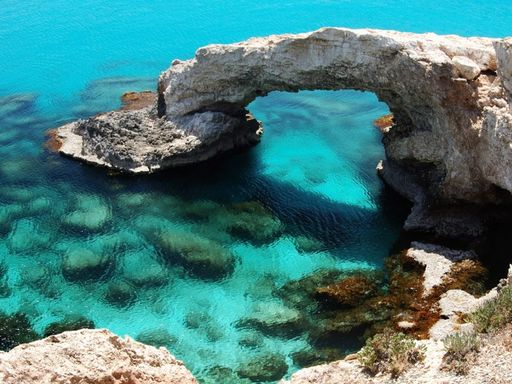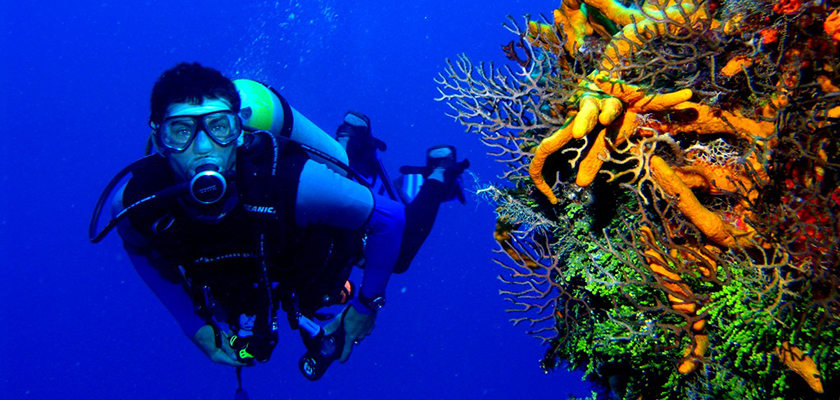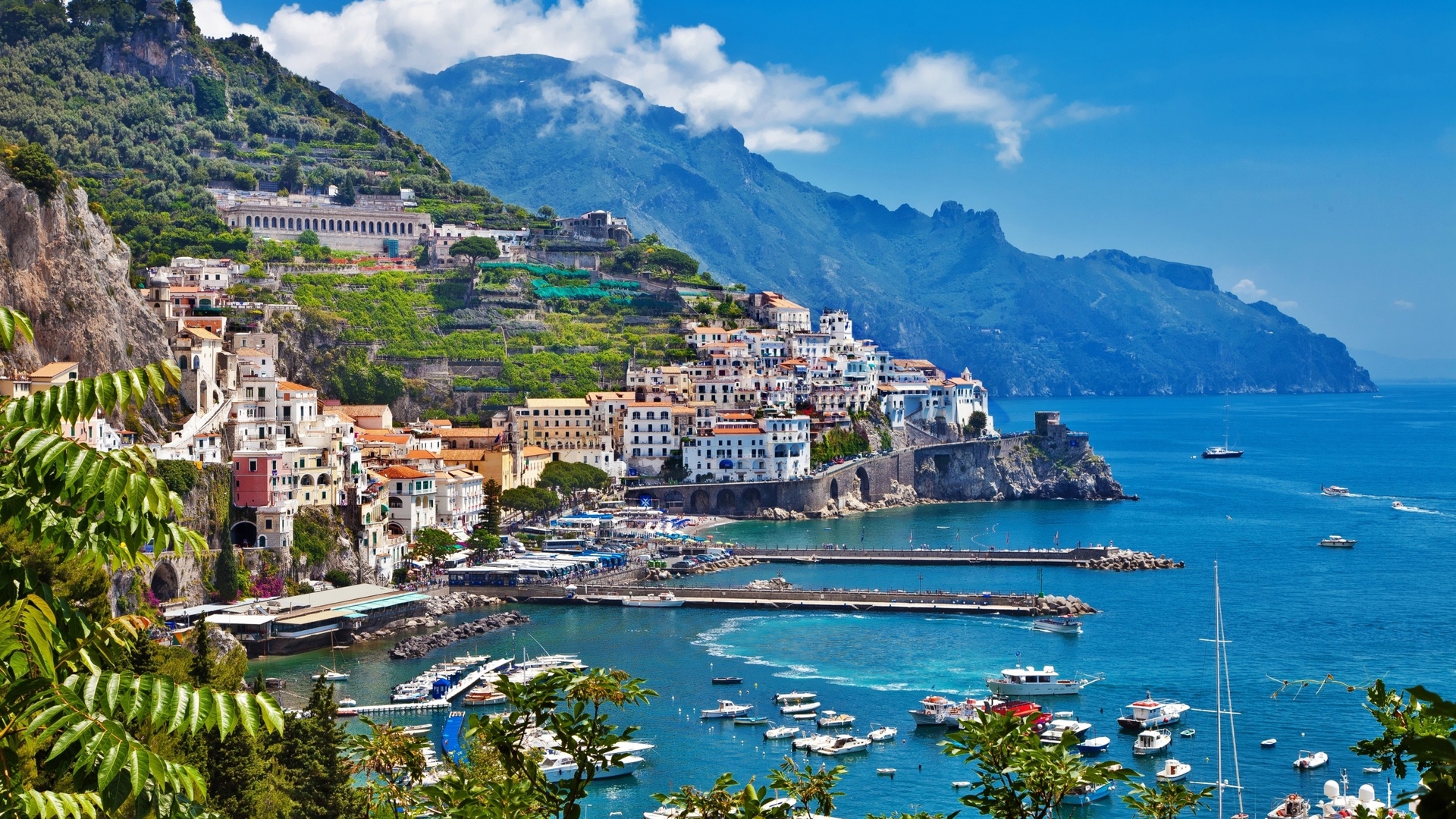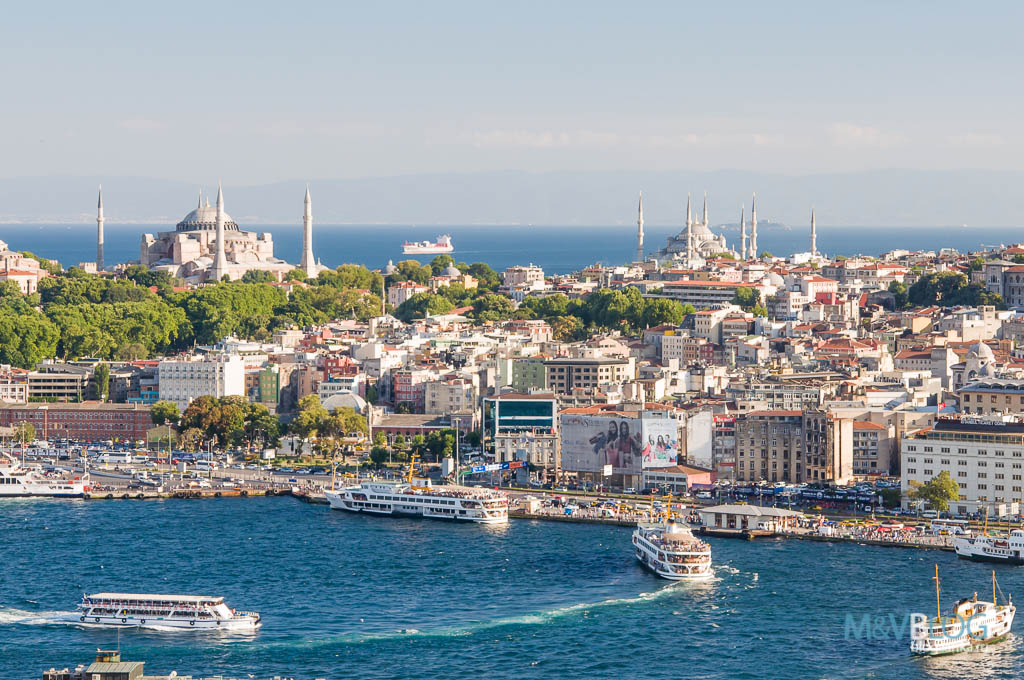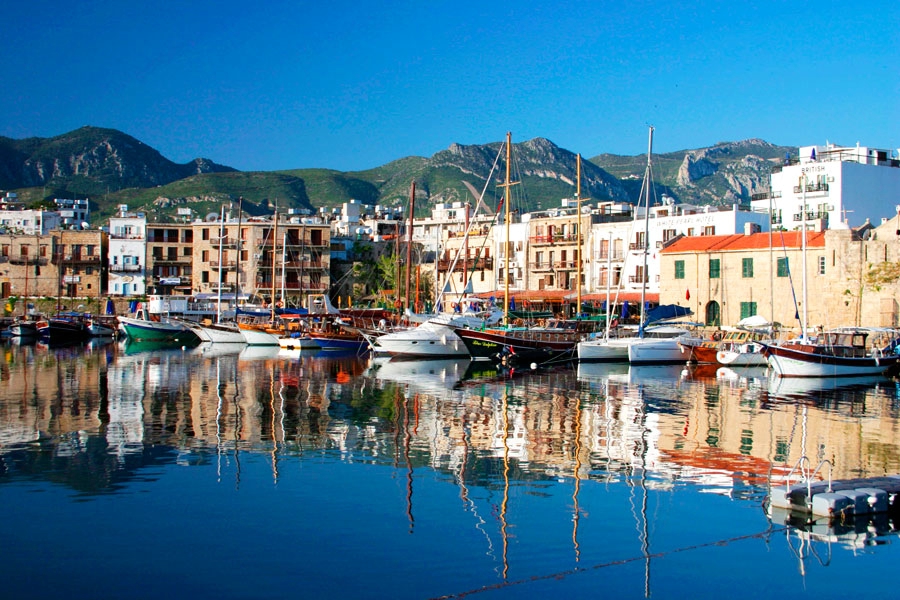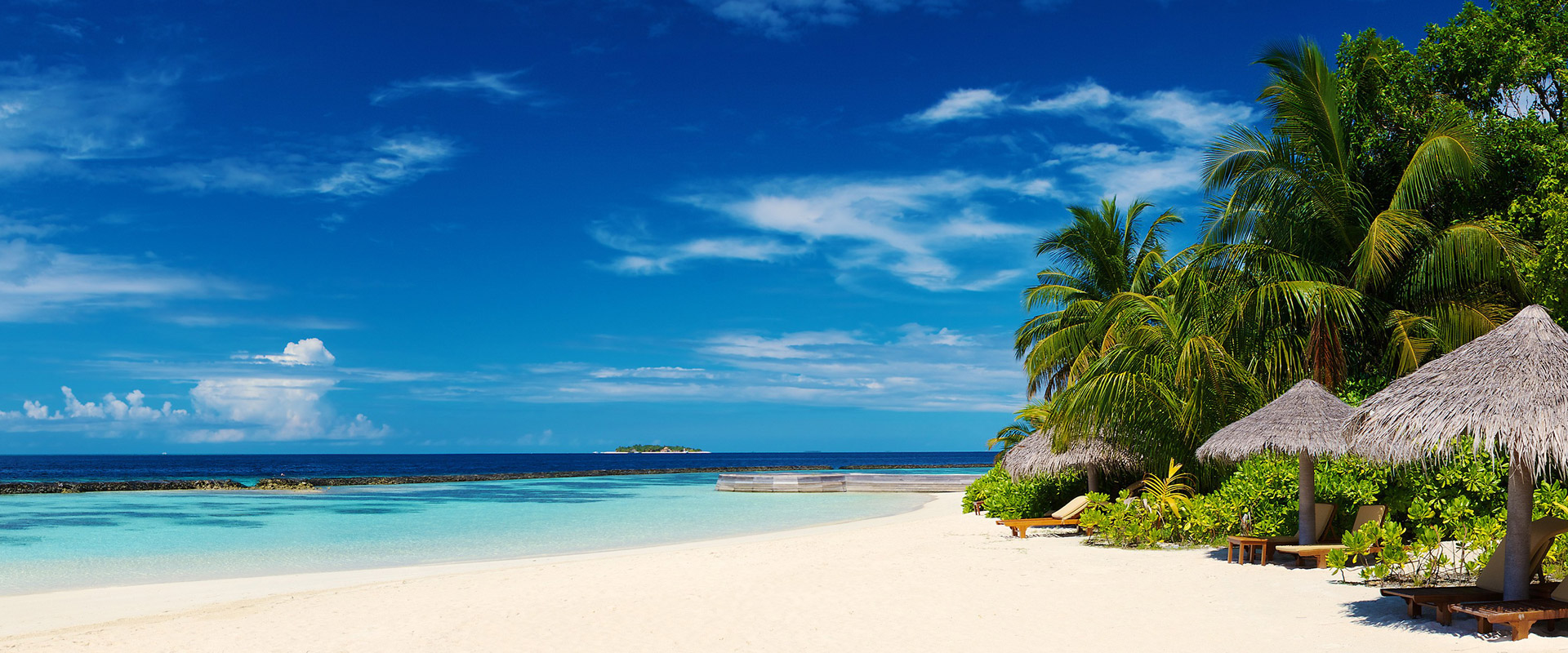Escape for the Weekend
Explore our collection of weekend
Andorra
What to see in Andorra? Spa in Caldea; Ordino in Valira del Nord Valley; Vallnord ski resorts and ice diving; glacial Madriu valley.
Andorra, officially the Principality of Andorra, is a microstate in Southwestern Europe, located in the eastern Pyrenees and bordered by Spain and France. The total area of Andorra is only 468 square kilometers and the population of the country is 85 thousand people. The capital of the country is Andorra la Vella. The official language is Catalan.
The national currency is the Euro, though the country is not a member of EU.
The terrain of Andorra mostly consists of mountains dissected by three narrow valleys. The climate is alpine and continental. Andorra is a sunny country – there are about 300 days of sunshine a year.
Andorra is a true paradise for shopaholics, as for many goods you will pay at least 20% - 30% less than in France or Spain, for example.
Connoisseurs of spa treatment will like Caldea, the largest spa center in Southern Europe, suggesting huge range of spa facilities and working all year round.
People interested in history should not miss Ordino, located in Andorra's picturesque Valira del Nord Valley. Some splendid buildings of this quiet town are dating back to the 17th century. In the village of La Cortinada you can see the lovely 12th-century Sant Martí de la Cortinada church. And of course, many sites worth seeing can be found in Andorra la Vella, one of the world's highest capital cities.
As a mountainous country Andorra has plenty of opportunities for skiing. The most famous places are Vallnord, containing three unique ski resorts: Arcalis, Pal, and Arinsal; and Grandvalira.
Those who like hiking can visit the glacial Madriu valley, a striking UNESCO World Heritage site.
There are no airports in Andorra, so tourists get there mostly by transfers from Barcelona (Barcelona–El Prat Airport (BCN) located 12 km of the center of Barcelona) or Toulouse (Toulouse Blagnac Airport (TLS), an airport located 6.7 km of Toulouse).
Though Andorra is a landlocked country, it has interesting diving places.
In Vallnord you can take up ice diving. Exploring underwater world under a thick layer of ice and snow will become an amazing experience.
Andorra’s mountain lakes give an opportunity of scuba diving in waters from 2,000m to 2,700m above sea level. The depth ranges from 5 to 90 meters.Austria
What to see in Austria? Delightful architecture of Vienna, Innsbruck and Salzburg; the Wörthersee; the High Mountain National Park; underwater flora and fauna of Lake Attersee; hidden treasures of the Wolfgangsee; and the Grüner Sea.
Austria is a country in Central Europe. It is bordered by the Czech Republic and Germany to the north, Hungary and Slovakia to the east, Slovenia and Italy to the south, and Switzerland and Liechtenstein to the west. The territory of Austria is about 84 square kilometers, the population is roughly 8,5 million people, one quarter of which lives in the capital of the country, Vienna. The official language is German. As Austria is a Eurozone member, the national currency is euro.
Austria's terrain is highly mountainous -- the Alps cover 3/4 of the country, and the climate is temperate continental. Due to its geographical position, Austria is often called the capital of winter sports in Europe. However in summer there are a lot of tourist attractions too. Guests of the country can visit lots of historic places, hike mountains, enjoy stunning architecture of Vienna, walk along the streets of Innsbruck and Salzburg, swim in the Wörthersee, immerse into nature in the High Mountain National Park in the Zillertal Alps or the National Park Thayatal,
Vienna International Airport (VIE)
It is the country's biggest airport; it serves as the hub for Austrian Airlines
Salzburg Airport (SZG)
The second largest international airport in Austria. It serves Salzburg, the fourth-largest Austrian city.
Linz Airport (LNZ),
It is a minor international airport near Linz, which features flights to European leisure and some metropolitan destinations.
Innsbruck Airport (INN)
The largest international airport in Tyrol in western Austria
Diving in Austria is available all year round.
Landlocked Austria possesses the cleanest alpine water in Europe - offering great conditions for scuba diving in the many picturesque lakes and rivers. In winter in highland lakes you can take up ice diving. The marine life in the lakes is surprisingly varied and interesting. Perch, trout, catfish, and grayling are some of the fish that are often seen.
Lake Attersee in the Salzkammergut region has 26 popular dive sites and is known for its abundance of fish life and underwater flora. In the Wolfgangsee, another lake in this region, the Nazis hid many Hungarian confiscated treasures. Divers still find some treasures, though it is strictly forbidden to take them.
Tirol is a famous diving region. Diving here is conducted along steep slopes and in wild gorges, with visibility sometimes reaching 50 meters.
Very many divers are attracted by the Grüner Sea in Styria. This fantastically beautiful lake is a flooded pasture. Snow melts in the spring, and the flood waters rise, creating a dive site. The maximum depth is 12m from May to June.Belarus
Belarus officially the Republic of Belarus formerly known by its Russian name Byelorussia or Belorussia is a landlocked country in Eastern Europe bordered by Russia to the northeast, Ukraine to the south, Poland to the west, and Lithuania and Latvia to the northwest. Its capital and most populous city is Minsk. Over 40% of its 207,600 square kilometres (80,200 sq mi) is forested. Its major economic sectors are service industries and manufacturing.
Belarus officially the Republic of Belarus formerly known by its Russian name Byelorussia or Belorussia is a landlocked country in Eastern Europe bordered by Russia to the northeast, Ukraine to the south, Poland to the west, and Lithuania and Latvia to the northwest. Its capital and most populous city is Minsk. Over 40% of its 207,600 square kilometres (80,200 sq mi) is forested. Its major economic sectors are service industries and manufacturing.
Airport names shown in bold indicate the airport has scheduled service on commercial airlines.
Belarus is a landlocked country in Eastern Europe. Here's the map. And this is about all we can tell you about Belarus. There is little information about diving there, we can only find one dive centre and, what there is, is in Russian! So, if anyone can help us out with this, please contact us!
Belgium
In Brussels, which is not only the capital of Belgium but also of the entire European Union, you can visit a plenary of the European Parliament. The entrance is free of charge. In front of the Parliament building there is the "Heart of Europe", a 12-meter-high sculpture symbolizing the united Europe.
In the park "Mini Europe", located in Brussels
Belgium is a country in Western Europe, bordering the North Sea, between France and the Netherlands. Belgium has three official languages, which are Dutch, French and German. The capital is Brussels.
Belgium is full of various tourist attractions.
In Brussels, which is not only the capital of Belgium but also of the entire European Union, you can visit a plenary of the European Parliament. The entrance is free of charge. In front of the Parliament building there is the "Heart of Europe", a 12-meter-high sculpture symbolizing the united Europe.
In the park "Mini Europe", located in Brussels, you can see the most famous sights of the whole Europe in one place. The park, which opened in 1989, contains more than 350 copies of the world-known attractions: the Eiffel Tower, the Doge's Palace, Big Ben, the Leaning Tower and many other memorable places of 80 European cities.
In Liege, the oldest and the largest city of Wallonia, you will see Saint Lambert Square, the Museum of Walloon Art and Walloon life, the stunning Town Hall and the stony laces of St. James Church.
In Bruges, whose unofficial name is the "Venice of the North", you can take a ride along its charming channels, look at the city from the top of the tower of Belfort (Belfry of Bruges), or stroll through the romatic medieval streets and enjoy the intact architecture of the 14th century.
In the town of Binche, near Mons, you can see colourful and joyful Belgian, which takes place in February, a few days before the start of the Catholic Lent.
Those who like hiking, cycling, nature and tranquility, usually go to the Ardennes, whereas those who prefer sun, sea, and water sports, choose the coast.
The climate of Belgium is temperate, with mild winters and cool summers.
The national currency is euro. All major cards are usually accepted.
Airports
Brussels Airport (BRU)
Antwerp International Airport (ANR)
Brussels South Charleroi Airport (CRL)
Diving in Belgium
Belgium may not seem to be an obvious diving-destination. However, diving in Belgium can be more diverse than many divers could guess.
Experienced divers can assay their strength in the North Sea. There they can explore such wrecks as the SS Trifels, a German cargo ship sunken in 1941 by a torpedo and lying at a depth of between 24 and 36 meters, and the MS Birkenfels, resting at 36 meters deep.
Flanders offers many natural dive sites, such as lakes and sand pits filled with water – these dive sites are often shallow and boast various fish life. And in Wallonia there are a lot of interesting quarries. One of the best quarry dives in Belgium is Carrière la Croisette, an old marble quarry, which is nowadays a privately owned dive site with excellent facilities. Another perfect dive site in Wallonia is La Gombe, where you can see rich fish life, a sunken airplane and submerged trees.
In Belgium there is the world's deepest diving pool, Nemo 33. It consists of flat platforms located at various depth levels and is filled with non-chlorinated, highly filtered spring water, whose temperature is maintained at 30 °C. In the pool there are several simulated underwater caves at the 10 m depth level.
Bulgaria
Old Sofia, rich in various archaeological sites; Veliko Tarnovo, a real architectural treasury; the city-museum Nessebar; Plovdiv; picturesque lakes of Pomorie resort; underwater caves of Mermaid (Rusalka); ancient wrecks of Yailata and Sozopol; ice-diving in Lake Iskar.
The Republic of Bulgaria is a south-east European country, which occupies about twenty percent of Balkan Peninsula, and is washed by the Black Sea. The nearest neighbors are Greece, Turkey, Serbia, Romania and Macedonia. The country is famous for diverse landscape, where hills and plateaus coexist with deep river valleys and mountain ranges, among which there are the Balkan Mountains, the watershed between the Aegean Sea and the Danube. The climate of Bulgaria is continental and Mediterranean.
In the Bulgarian capital Sofia, which is considered to be one of the oldest cities in Europe, you can explore various archaeological sites such as towers and gates of Serdica, St. Sophia Church, built in the 11th century, and the largest Bulgarian Orthodox Alexander Nevsky Cathedral, in the gloomy crypt of which you will find the Museum of Icons. Connoisseurs of architectural masterpieces should visit the oldest metropolitan church of St. George, the building of the National Assembly of the 19th century and the Sofia Mineral Baths, which replaced the famous Roman baths. Those who are interested in cultural and historical heritage should take a tour around the Gallery of Foreign Art, the National Museum of Ethnography, the National Gallery of Art and the Museum of Natural History. You should also pay attention to the Botanical Museum and Gardens, and the Zoological Museum.
Another place of interest is town of Veliko Tarnovo, is a real reserve where you can see such architectural delights as the Tsarevets fortress, the royal palace, an ancient monastery of St. Peter and Paul, built in the 13th century, as well as ancient churches of Forty Martyrs and St. Demetrius, founded in 10-11th centuries. It is worth visiting local museums of the Renaissance and the Second Balkan kingdom, and amazing caves of Stara Planina. In the city-museum Nessebar you can admire many architectural artifacts of antiquity, among which there is the church of St. Stephen, built in the 11th century, and the magnificent Church of Holy Virgin. If possible, you can visit Varna and its cathedral of St. Mary of the Assumption, famous for unique frescoes; the Maritime Museum and the only Dolphinarium in the Balkans; Gabrovo with its ethnographic park-museum of Etara; Plovdiv, with its gate Hisar Kapija of the 2nd century, the ancient Roman theater Trimontium and the Museum of Archaeology, Ethnography and National Revival; Shumen with its 12th century’s castle and the beautiful Tombul mosque of the 18th century.
The national currency of Bulgaria is the Bulgarian lion.
• Bourgas International Airport (BOJ), Burgas
• Varna International Airport (VAR), Varna
• Sofia International Airport (SOF), Sofia
• Gorna Oryahovitsa International Airport (GOZ), Gorna Oryahovitsa
• Krumovo International Airport (PDV), Plovdiv
Located on the Black Sea coast Bulgaria offers its guests a wonderful opportunity for exciting high-quality diving. Black Sea waters are characterized by rich underwater world, where you can find unique species of colorful fish, including bright mullets and gobies, as well as seahorses, jellyfish and crabs. You can get a lot of unforgettable emotions, exploring the harsh underwater rocks or searching for the lost sea treasures. Spectacular diving can be practiced on the northern coast of the Black Sea near the city of Varna and in the south near Bourgas.
A popular destination for deep-sea diving is the famous resort Pomorie with its picturesque lakes and estuaries; Mermaid (Rusalka) rich in secluded coves and unique underwater landscapes, with its complex of four dozen underwater caves; Yailata, where you can explore ancient wrecks; Resort of St. Constantine and Helena, with many small coves surrounded by steep rocky cliffs; and Sozopol - immersion in its marine world will bring a lot of delight both to beginning divers and to experienced ones. The waters of Sozopol keep many ancient wrecks, as well as the remains of ancient household items and submerged buildings, belonging to different epochs.
Also, you can enjoy high-quality diving in Elenite, Sunny Beach, Golden Sands, Ravda, Tsarev, Albena, Varna, Burgas, Nesebar and Silistar. A dive club in Sofia offers an unusual service – you can get an unforgettable experience of extreme ice-diving in Lake Iskar.
Croatia
Amphitheater of Pula, Diocletian's Palace in Split, Princely Palace in Dubrovnik, Brijuni - a group of islands in front of the western coast of Istria. In the western area of the Croatian city of Pula there is a Roman forum. Krka National Park is the seven beautiful cascades of waterfalls, two ancient monasteries, amazingly picturesque landscapes and a sense of unity with nature.
Croatia officially the Republic of Croatia is a sovereign state between Central Europe, Southeast Europe, and the Mediterranean. Its capital city is Zagreb, which forms one of the country's primary subdivisions, along with its twenty counties. Croatia covers 56,594 square kilometres (21,851 square miles) and has diverse, mostly continental and Mediterranean climates. Croatia's Adriatic Sea coast contains more than a thousand islands. The country's population is 4.28 million, most of whom are Croats, with the most common religious denomination being Roman Catholicism.
A unitary state, Croatia is a republic governed under a parliamentary system. The International Monetary Fund classified Croatia as an emerging and developing economy, and the World Bank identified it as a high-income economy. Croatia is a member of the European Union (EU), United Nations (UN), the Council of Europe, NATO, the World Trade Organization (WTO) and a founding member of the Union for the Mediterranean. As an active participant in the UN peacekeeping forces, Croatia has contributed troops to the NATO-led mission in Afghanistan and took a non-permanent seat on the UN Security Council for the 2008–2009 term.
Travel to any destination may be adversely affected by conditions including (but not limited) to security, entry and exit requirements, health conditions, local laws and culture, natural disasters and climate. Regardless of your destination, check your local travel advisory board or department for travel advice about that location when planning your trip and again shortly before you leave.
Language – Croatian, with English widely spoken in tourist areas.
Currency – Kuna (and the Euro). Credit cards are widely accepted.
Major Airports – Dubrovnik (DBV), Split (SPU) and Zadar (ZAD)
Electricity and Internet – Electricity is 220 volts, 50 Hz. Internet service is available in most of the hotels and cafes.
| Rank | Airport | City | IATA / ICAO | 2015 | 2016 | Change |
|---|---|---|---|---|---|---|
| 1. | Zagreb Airport | Zagreb | ZAG / LDZA | 2,587,798 | 2,776,087 |  6.9% 6.9% |
| 2. | Split Airport | Split | SPU / LDSP | 1,955,400 | 2,289,987 |  11.5% 11.5% |
| 3. | Dubrovnik Airport | Dubrovnik | DBV / LDDU | 1,693,934 | 1,993,243 |  17.6% 17.6% |
| 4. | Zadar Airport | Zadar | ZAD / LDZD | 487,652 | 520,924 |  6.7% 6.7% |
| 5. | Pula Airport | Pula | PUY / LDPL | 359,426 | 436,121 |  10.7% 10.7% |
| 6. | Rijeka Airport | Rijeka | RJK / LDRI | 139,718 | 145,297 |  4.0% 4.0% |
| 7. | Osijek Airport | Osijek | OSI / LDOS | 28,651 | 30,605 |  6.3% 6.3% |
| 8. | Brač Airport | Brač | BWK / LDSB | 8,809 | 12,354 |  28.7% 28.7% |
| TOTAL | 7,255,234 | 8,219,321 |  21.1% 21.1% | |||
Croatia lays claim to the lion’s share of the eastern Adriatic coast, and a quick look at a map will delight divers and reveal a land with more than its fair share of islands and coastline. To the north, situated at the foothills of the Alp and Dinarid mountain chains, Kvarner is one of the most beautiful gulfs on the Adriatic. It’s the closest warm water diving destination to Eastern Europe and diving is possible all year. Kvarner's underwater world is known for amazing wall dives and rocky reefs covered with beautiful gorgonians. The craggy coastline and relatively shallow water underpin an underwater world with enough variety to make this a great dive destination. Further south, the island of Vis is literally encircled with dive sites. From walls to wrecks to rocky reefs, there’s something here for divers of all levels.
Great Dives
- Plic Tenki – A wall here drops to 22 metres/72 feet and one of the most interesting sections is a rock pinnacle at about 15 metres/50 feet. Pockmarked with holes, this area is covered with underwater plant species and fish, such as two banded bream and scorpionfish. More experienced divers will enjoy the deeper part of the reef at 25-40 metres/82-130 feet, which is covered with red gorgonians.
- The Wreck of the Teti – Just off the Island of Mali Barjak, the bow of the 70-metre/230-foot long Teti is 7 metres/23 feet deep and the stern is at more than 30 metres/100 feet. Look for the conger eels here that are well used to divers.
- Bisevo Grotto – Blue Grotto is a magical sea cave and a prime dive site with visibility often better than 25 metres/80 feet. On the dive you’ll likely meet up with octopus, scorpionfish, lobster and more.
- The Cathedral – Not far from Zadar, off the small island of Premuda, is a dive site with a series of inter-connected caves through which sunlight filters in a spectacular display. Octopus and spider crabs reside here.
- Kornati Archipelago – There’s a wall off Rasip Island, festooned with sponges and corals, that drops to more than 60 metres/185 feet. Fish life is remarkable at recreational diving depths.
- Wreck of the Taranto – The Taranto is a fairly intact wreck of a merchant navy ship, which sank in 1943 after hitting a mine. Old tractors, part of the cargo, add interest to the dive, and large sea bass are sometimes spotted here.
Want to know more? Visit ScubaEarth® for further information on thousands of dive sites, marine species, destination essentials and more.
Cyprus
The ancient settlement of Amathus and Choirokoitia; a sanctuary of Aphrodite; painted churches of Troodos; wrecks of the RS Zenobia, the HMS Cricket and the Lady Thetis; and abundant marine life of Akrotiri, Green Bay and Manijin Island
Cyprus, officially named the Republic of Cyprus, is an island state in the eastern part of Mediterranean Sea. Cyprus is located north of Egypt, south of Turkey, east of Greece, northwest of Israel, and west of Syria and Lebanon. Cyprus is the third largest island in the Mediterranean Sea – its total area is about 9.3 thousand square kilometers; and the population is more than 1 million people. The capital of the country is Nicosia. The official languages are Greek and Turkish.
The terrain of the country consists of two mountain ranges and the central plain. The climate is subtropical.
The national currency is the Euro.
Cyprus has long been a favorite vacation spot. The turquoise Mediterranean Sea, palm and olive trees, exotic flowers, comfortable hotels, chic restaurants and many more other things attract tourists from all over the world. Located at the crossroads of East and West, Cyprus has a very unusual character. His story began more than 9000 years. The Assyrians, Egyptians, Persians, Romans Ottomans, and the British took interest in this island in different times and all of them influenced its wonderful and unique culture.
One of the top tourist attractions in Cyprus is the ancient settlement of Amathus, which was founded as an Eteocyprians village about 1050 BC. Connoisseurs of ancient history will be also glad to see Kalavasos-Tenta, a New Stone Age settlement; Choirokoitia, where you can still see several circular huts, created about 9 thousand years ago; Curium, the remains of Roman and Byzantine buildings constructed around 4500-3900 BC; the well-preserved Tombs of the Kings near Paphos and Palaepaphos, a sanctuary of Aphrodite erected in 1200 BC. More recent architectural and historic monuments of this beautiful island include painted churches and monasteries of Troodos, Kyrenia Castle, Kykkos Monastery, Saint Hilarion Castle and lots of other interesting sites.
The nature of Cyprus is not less interesting than its rich culture – here you can enjoy almost pristine landscapes of Akamas Peninsula; bask on the north-coast beaches; watch green and loggerhead turtles and rare moufflons; go biking, horse-riding or hiking in Cyprus mountains or dive in its azure waters.
Larnaca International Airport (LCA) the main international airport of Cyprus located 4 kilometers from Larnaca.
Paphos International Airport (PFO), located near the city of Paphos, serves the western part of Cyprus
Those who like wreck diving will find plenty of interesting sites in the waters of Cyprus: the RS Zenobia, an 11 thousand-ton ferry, sunk in 1980 just off the Cypriot coast and lying at a depth of about 40 meters; the Liberty, deliberately sunk in environmental marine reserve in the Protaras area; the HMS Cricket, a WWII battleship, lying at a depth of 27 meters; the Lady Thetis and the Constandis sunk on purpose in Limassol in 2014.
Nature lovers will like Akrotiri, where you can meet groupers, sea breams, moray eels, basses and octopuses and explore a sunken helicopter and canons; Big Country, multi-level dive site with caves, overhangs and boulders; Green Bay, suitable for all levels; Manijin Island, where you can enjoy picturesque cliffs and caves; the Amphitheatre, inhabited by moray eels, octopuses and flute fish; and the serene Cynthiana Beach, whose lagoon is an ideal place for beginning divers.
Diving in Cyprus is possible all year round. The water temperature varies from 18 to 28 degrees Celsius; the visibility is up to 30 meters.
Czech Republic
Denmark
What to see in Denmark? The Blue Planet; Tivoli Gardens; Bakken Park; Legoland; wrecks and sea life of the Oresund; cliffs of Bornholm and caves of Hammershus; wrecks Sjælland and Dannebroge; and many WWII wrecks.
Denmark is a country in Northern Europe, bordered by Germany to the south. The nearest neighbors are Sweden and Norway. The country consists of the peninsula of Jutland and the Danish archipelago of 443 islands and is washed by the North Atlantic Ocean. The total area of the country is more 43 thousand square kilometers. The capital of Denmark is Copenhagen. The official language is Danish. The national currency is the Danish crown.
The terrain of Denmark is mostly flat and consists of plains. The climate is temperate, with mild winters and cool summers.
There is a lot to see in Denmark. Those who are interested in marine life will like The Blue Planet – the largest aquarium in Northern Europe – which gives the visitors a feeling of being under water. Tivoli Gardens, founded in 1843, is a national treasure with exotic architecture, historic buildings and lush gardens, fascinating people of all ages at all times of the day and the year. The 431-year-old amusement park, Bakken, is a wonderful place of resort for tourists with children. The park is inhabited by almost 2,000 free range deer and has lots of roller coasters, Ferris wheels, drop towers, and many more exciting and extreme adventures. Other ideal places for family vacation are Legoland and Djurs Sommerland, with lots of rides and attractions for kids of all ages.
Airports
Copenhagen Airport, Kastrup (CPHz) is the main international airport in Denmark and the largest airport in the Nordic countries.
Billund Airport (BLL), one of Denmark's busiest charter airline destinations.
Aalborg Airport (AAL), an international airport, located 6.5 km northwest of Aalborg.
Aarhus Airport (AAR) is an international airport located 35.9 km northeast of Aarhus.
Diving in Denmark
The Danes have always been seafarers, so all marine activities are very popular here, including diving. The waters of Denmark have great opportunities for wreck diving, night diving, off-beach diving or archaeological trips.
In the Oresund, where the waters of the Kattegat and the Baltic Sea mingle, you will find many various marine species, such as mussels, crabs, fish and starfish, and large amount of wrecks.
The waters around Anholt are full of wrecks dating back to the war, and more recent
ones. The depth is from 25 to 40 meters and the visibility reaches 30 meters.
Abundant marine life can be watched at Fornaes Fyr, and at Helgenaes – the easternmost point and the southernmost point of Djursland, respectively.
In Bornholm there are underwater cliffs; and near Hammershus you can dive in the caves.
Due to a huge amount of traffic in the Baltic Sea off the coasts of Denmark, its waters keep lots of wrecks – over 5000 ones, dating back over 1000 years. Some of the older wrecks, which are still diveable, are "Sjælland" sunk 1801 and "Dannebroge" sunk 1710. The number of WWII wrecks is enormous. They include fighter-bombers, Russian U-boats, minesweepers, torpedo boats, frigates, hospital ships, barges laden with weapons, coasters

